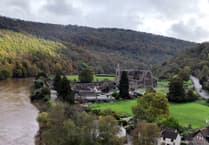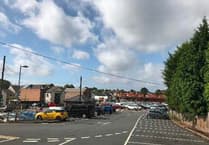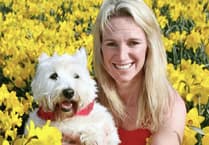Every year I forget how much I love the brilliant-white snowdrop carpets – until they appear in all their glory.
They really are a stunning addition to any garden as they are the first real eye-catching ‘pop’ of colour. Whilst primroses and crocuses are lovely too, it’s the bright white drifts of snowdrops that really shout ‘spring is on its way’ and pave the way for the ultimate spring-flower drifts of daffodils.
And if after seeing them work their magic, you have been smitten too and want to introduce them into your garden, then you don’t have to wait long to do so. Snowdrops are best planted (and transplanted) ‘in the green’, which means just after they’ve finished flowering and whilst the foliage is green, before it turns yellow.
Please don’t go digging them up from woodlands or hedgerows as that is illegal. Under the Wildlife and Countryside Act 1981, it is unlawful to uproot (dig up) any wild plant without permission from the landowner or occupier. You can buy snowdrops ‘in the green’ from garden centres or online or if you have a generous friend or neighbour who is willing to split their clumps, make sure they are replanted the same day and don’t dry out. They don’t like that.
You can plant the bulbs singularly and let them spread or plant in small clumps of three or four bulbs for more impact.
I think I mentioned recently that another favourite thing of mine is to watch the honeybees visit the snowdrops as they are the first real supplier of pollen for them after the dormant winter months. It is worth taking the time to be quiet and just watch as the bees will reverse out of the bowed flower-heads with the pollen in their pollen baskets on their back legs–and the pollen is bright orange! I have known this fact for years but it still delights me. Along with the other fascinating fact that all these bees with orange knees (‘knees’ are not technically correct but it sounds good) are all female as male bees don’t do ‘pollen collection’.
As the pollen is collected it is moistened with nectar, and packed into the ‘baskets’, or corbiculae to give them their proper name, tokeep it firmly in place. Bumblebees do the same.
If you see these bees out and about without the orange ‘lumps’ on their back legs, then they haven’t started foraging yet and the pollen baskets are empty – and invisible. And not all pollen is orange, but a huge variation of colours and shades, which means you can tell which flowers the bees have been foraging from by the colour of the pollen in their ‘baskets’. You can buy a ‘Pocket Pollen Colour Guide’, a small leaflet–or have a look at an online pdf–which describes all the pollen colours, from broad beans to borage and a whole load in between. It’s fascinating.
I really enjoyed sharing all that–bees just never cease to amaze me, whether it’s learning something new or remembering something that I knew.




